Top ratings
Get free trial access now Try first, then study!
4.92/5.0 (from 386 Trusted Shops Reviews )
4.9/5.0
- Google reviews
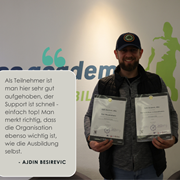



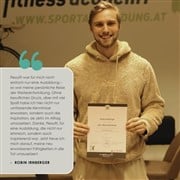
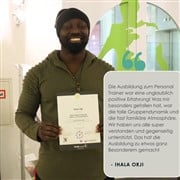


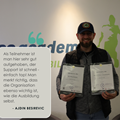



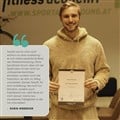
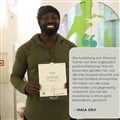



starting at €2.390,- | face-to-face course
» Our Course Packages
Flexible learning - our possible learning options for the course:
Recognized & Certified
Our graduates, partners & friends say
Our team will be happy to advise you at any time by phone, chat or in person
Take a moment to catch your breath - with our Relaxation Coach Course!
Extent of learning
728 E
EQF level
The training is based on EQF level 4 »
Course start
Possible immediately
Learning variant
Classroom Courses


As a relaxation trainer, you will show how to create a balancebetween tension and relaxation, activity and rest, excitement and recovery. You will learn to recognize the individual needs of your clients and master a wide range of techniques and methods to design and conduct effective relaxation training sessions .
Our relaxation trainer training is practice-oriented and gives you the knowledge you need to meet the ever-increasing demand for alternative health services . As a qualified relaxation trainer, you can bring more serenity into your own life and that of your clients.
During your training to become a qualified relaxation trainer, you will learn about different relaxation methods. These are broken down into muscular, vegetative and cognitive levels.
You will learn mental and autogenic training, basic exercises from yoga and pilates, as well as progressive muscle relaxation. We will show you various ways of self-help measures for spinal pain and how you can assist clients with stretching. You will also be taught the most important basic theoretical knowledge about breathing, as well as introducing and practicing numerous practical breathing exercises.
The theoretical content you will deal with includes stress theory - from the biology of the stress mechanism to stress management techniques. In the subject of lesson design and planning, you will learn how to structure and plan a relaxation lesson.
We will also show you the links between relaxation and endurance sports and nutrition.
Our certificates are valid worldwide and are issued in different versions. On request, you can receive our certificate in several languages (DE, EN, ES), with country-specific information and with or without printed grades.
All these variants are available to you free of charge for a lifetime for downloading from your online campus. In addition, depending on the learning package you have purchased, you will receive a certificate of your choice, which will be issued on high-quality special paper with embossed printing.
The following certificate (in several languages DE, EN, ES) will be awarded:
We are happy to help you by phone, e-mail or chat. However, you may find the answer to your question in our general FAQ or relaxation trainer FAQ.
You start your training with the basic module Sports Competence. You will learn theoretical knowledge from videos and scripts in 8 subjects, completing each subject with a short multiple-choice online exam.
You then move on to your subject specialization, i.e. your chosen course.
As our training courses are designed to be very flexible, the duration of the course depends heavily on your own learning initiative, the amount of time you spend each week and your previous knowledge.
You can start the basic sports competence module online at any time. This not only bridges the waiting time until the face-to-face lessons, but also allows you to acquire important basic knowledge.
You will learn in a group of 5 to 15 people in practice-oriented face-to-face lessons. Instructors teach you what you need to know as a trainer and support you with valuable tips for your day-to-day work.
You earn your grade with practical exercises and voluntary additional tasks. These exercises can range from training protocols and written assignments to filming exercises.
During your training, you can expect both multiple choice online intermediate exams and a final exam in person.
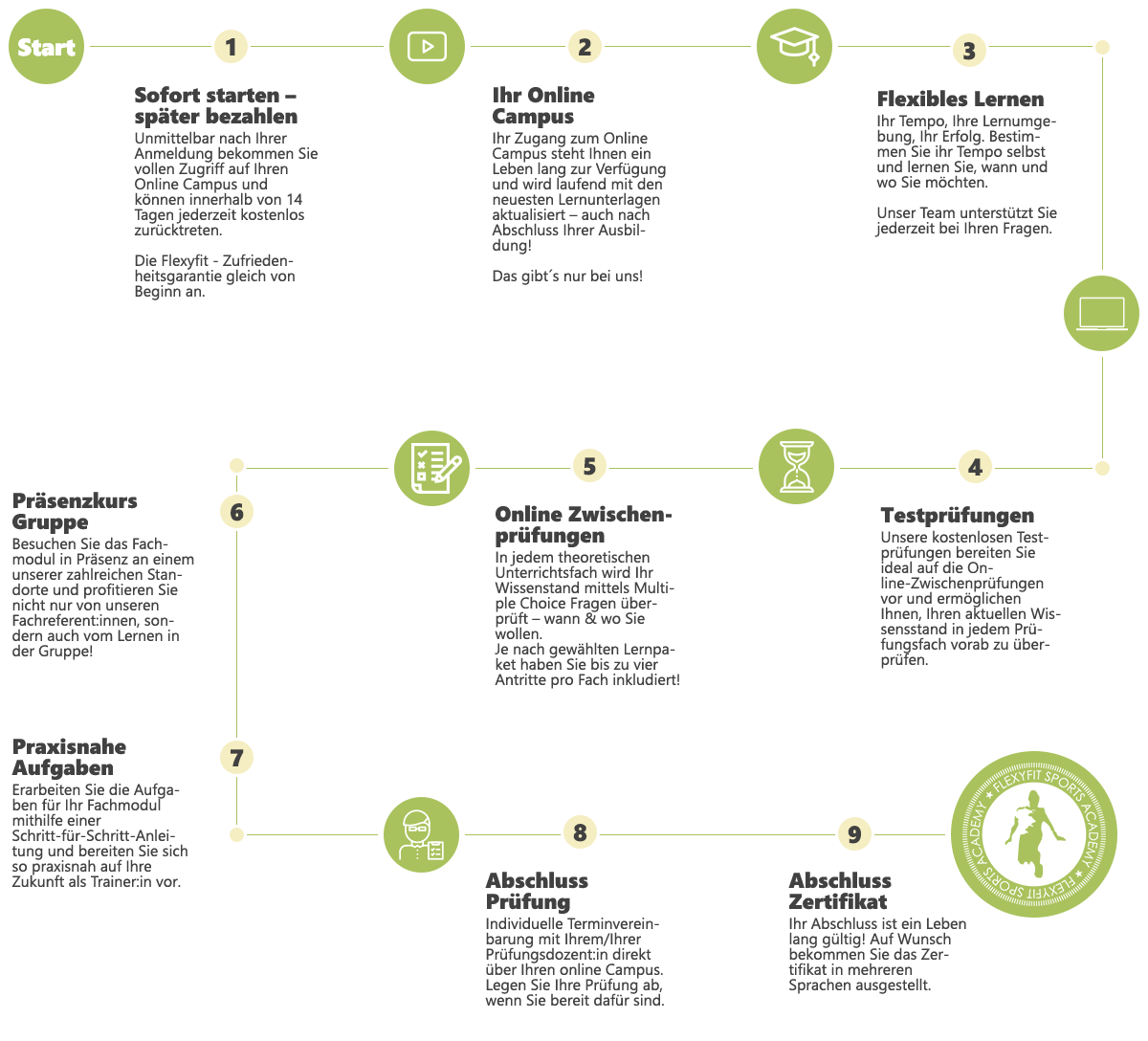
Extent of learning
200
Sports expertise
446
Presence | Self-study
12
Literature research
60
Practical realization
10
Additional tasks & examinations
This course is ideal for educational leave. Individual assessment and approval is carried out by the respective funding body. We will be happy to provide you with detailed information on the duration and procedure of educational leave. Contact us to arrange a consultation!
Participation in the face-to-face webinars is mandatory for educational leave and must be proven to the AMS. The participant is responsible for requesting confirmation of attendance. Confirmation of attendance of the face-to-face webinar will only be issued during each webinar if requested by the participant.
Show all chapters of the subjects

We educate the best trainers in the fitness branch. From start to finish of the education - and beyond!- we support and guide our students.
Functional anatomy is a foundation necessary for all trainers in exercise, fitness and sports. This subject provides a comprehensive introduction to the anatomy of the human body and a wellspring of important knowledge.
The course is constructed to present the information in an interesting and comprehensible manner and features different learning approaches appropriate for Fitness and Personal Trainers.
The goal is, to understand the relationship between movement patterns, the human body and relevant anatomical terminology.
Show chapter

Show chapter

Show chapter

More and more companies are integrating Corporate Wellness and similar health initiatives into their employee benefits packages. By doing so they promote the health and well-being of their employees, reducing the incidence of sick-leave and building healthier, stronger team dynamics.
Exactly why such initiatives are important is discussed in this introduction to the concept, as well as challenges that such initiatives face including organisational dysfunction.
Participants also learn about the advantages of corporate wellness and some trusted approaches and tools for finding and working with a company.
We offer suggestions on how to approach companies about Corporate Wellness, how to develop a corporate wellness concept and important organisational points to consider.
Participants will be exposed to some practical examples and will have the possiblity to perform group work on the topic.
Show chapter

The unit on Marketing and Customer Interaction gives participants some insight into identifying, working with and marketing to their ideal customer. This is one of the most useful units for the aspiring trainer, as it helps them identify their place in the market, which makes for a more successful career start.
We begin by taking a look at Marketing itself to understand exactly what it is and of what relevance it has for personal trainers.
Important basic concepts such as USP, positioning, target market, etc. are introduced and different models from marketing such as the SMART Formula, marketing mix (7Ps) and more are explained.
The communication between trainer and client is also addressed in this unit. Various aspects of communication theory and some guidelines for successful communication are covered.
Upon completion of this subject, participants are able to develop marketing strategies for their product and/or services, ready to position themselves in a market rich in variety and full of possibility!
Show chapter

A working understanding of human physiology and therefore the relationships between the various functions of the human body is crucial for anyone working in the exercise and fitness field. It is a requisite knowledge for the sufficient practice of their profession.
This course makes the relationships within the human organism graspable for everyone. Take a deep-dive into the human body and learn the functions of our organism for your new profession in fitness.
In this subject you will get a close look at energy metabolism needed for muscle activation, the circulatory system and the pulmonary system.
Any high quality education in fitness and exercise begins with the foundations of anatomy and physiology.
Show chapter

In this unit participants are prepared for successful communication with their clients on every level. In addition, we take a look at how the trainer or coach can go about dealing with their own goals and motives, which will in turn help them better understand their clients.
The right goal-setting and the proper approach to feedback are an important parts of this unit.
The way we manage stress as trainers and with our clients and a variety of learning strategies are explored so these skills can be integrated into your professional approach.
Show chapter

In this introduction to training theory we look at the foundations of training plan creation and management, including the principles of training, training methodology and factors that influence sports performance.
Because performance capacity, performance diagnostics, training and competition are so interrelated, they are covered together in this unit.
The second half of this unit Im zweiten Teil der Trainingslehre wird das Training als komplexer Handlungsprozess und im Zusammenhang mit Planung, Ausführung und Evaluation definiert und bewertet.
Ein wichtiger Teil der Trainingslehre ist nach wie vor die Trainingsplangestaltung, die mit Beispielen über die Möglichkeiten einer Trainingsplangestaltung praktisch vermittelt werden.
Um das Thema der Trainingswissenschaft zu vertiefen, laden wir regelmäßig internationale Top-Dozenten wie Univ. Prof. Dr. Paul Haber und Prof.em. Dr.phil. Dr.med. Dr. hc Jürgen Weineck zu uns in die Academy ein.
Unter anderem sind sie für die Bücher "Optimales Training" (Jürgen Weineck) und "Leistungsphysiologie" (Paul Haber) in der Trainingswissenschaft bekannt.
Show chapter
Show all chapters of the subjects

The unit Flexibility Training and Assisted Stretching is divided into three parts: Flexibility Training, Assisted Stretching, and Fascia Training.
Flexibility Training
Flexibility training involves defining flexibility and mobility. Subsequently, an explanation of flexibility and stretchability is provided. The significance of flexibility for sports and relaxation is discussed, along with determining what influences flexibility and vice versa. Terms such as "Muscle Tone" are introduced and associated with relaxation.
Furthermore, the factors influencing stretchability are discussed, and various stretching methods such as static stretching, dynamic stretching, as well as active and passive stretching are explained. The benefits of stretching are discussed, as well as abilities mistakenly attributed to stretching. Additionally, participants learn various stretching exercises for different body parts.
Assisted Stretching
Assisted stretching as a mobilization and stretching technique is introduced in this unit, along with practical applications of assisted stretching. Participants receive a checklist outlining what to consider during a session. Moreover, contraindications prohibiting assisted stretching are addressed.
Fascia Training
Fascia training is also covered in this unit. The composition of fascia is discussed along with methods for training fascia. Practical exercises for fascia stretching are demonstrated, illustrating how a fascia training session can be conducted.
Show chapter

Show chapter

Show chapter

Show chapter

Show chapter

In the subject " Overview of Relaxation Methods," the first part presents the current situation regarding " Work-related Stress and Everyday Stress" based on scientific studies. Possible consequences for the individual as well as for our entire society can be derived from this.
In the second part, an overview of different intervention measures is provided. Based on the muscular, vegetative, and cognitive levels, the different Relaxation Methods taught in detail in the subsequent courses are categorized and presented.
Show chapter

The significance and benefits of mental training have gained ground in various fields over the past decades, whether in sports, professional life, or personal life.
Mental training offers different techniques to optimize the concentration and performance of individuals. Through techniques such as autogenic training, visualization, goal-setting training, etc., undiscovered potentials could be recognized and utilized.
In the realm of relaxation, mental training helps to slow down the relentless thought process, better understand it, and thus make relaxation possible. The course is divided into theoretical and practical parts, with ample space for self-exploration.
Show chapter

Show chapter

Die progressive Muskelrelaxation (PMR), nach Edmund Jacobson, wird bereits seit 1929 gelehrt. Diese Entspannungstechnik ist wissenschaftlich bestens untersucht.
Viele Institutionen, Therapeuten und Trainer nutzen und empfehlen PMR, um Menschen relativ schnell in einem angenehmen Entspannungszustand zu führen.
Diese Methode hat sich seit Ihrer Entstehung stark weiterentwickelt und ist mittlerweile auch in nur wenigen Stunden erlernbar. Im Fach "Progressive Muskelrelaxation" werden zunächst die theoretischen Hintergründe präsentiert, danach wird diese Technik selbst erlebt und selbständig praktiziert.
Show chapter

In todays modern world, stress is something everyone has encountered. Stress is even described by the World Health Organization as the health hazard of the century.
Thats why its important for trainers to address it, and even more important for relaxation trainers to be well-versed in it.
The beginning of this unit consists of background information on stress theory and definitions of stress. The biology of the stress mechanism is discussed, and physiological aspects are linked to stress.
Throughout this training, participants engage with various approaches such as the reaction-oriented approach or the transactional approach. Various models and schemas are presented that have proven effective.
Following a practical input where participants work independently, the SORK schema is examined in depth, discussing personal stressors, organism-specific factors, personal reaction patterns, and consequences.
The effects of stress and techniques for stress management are explained to participants and illustrated through graphics. Relaxation techniques are introduced, and the concept of relaxation is discussed and linked to related terms.
Show chapter

Show chapter

What is Yoga and where does it come from? Yoga is an Indian doctrine that originally stems from Hinduism. The core message of Yoga is: "Through practice and habit, one can perceive the world." Yoga is practiced either individually or in a group and consists of various body, breathing, and meditation techniques.
The earliest records of Yoga date back to the 2nd and 1st centuries BCE and are documented in the so-called Vedas, the sacred scriptures of Hinduism. Yoga is an ancient Indian philosophy that aims at the unity of body, mind, and soul.
The practice of Yoga encompasses various exercises, breathing techniques, and meditations aimed at strengthening the body and calming the mind.
In this subject of the Training Course for Relaxation Trainers, we will focus on some basic Yoga exercises that primarily concentrate on relaxation and strengthening of the body. We will also delve into the history and philosophy of Yoga and learn how this ancient tradition has persisted to the present day.
In the main part, selected Yoga positions with a focus on relaxation will be taught. Self-experience, as well as guiding and correcting the selected Yoga exercises, are central.
Show chapter
The basic module Sports Competence is approved by the German Central Agency for Distance Learning (ZFU) under the following number: 7324018c. The ZFU is the central authority for distance learning in Germany and works on the basis of the Distance Learning Protection Act (FernUSG). It decides on the approval of distance learning courses nationwide in order to guarantee a technically correct and generally professional distance learning course.
As a recognized institution in adult education, our curricula are regularly evaluated and recognized by state institutions and funding bodies. We are constantly striving to exceed current quality standards in order to guarantee you the best possible training. Convince yourself of our certifications.
There are a variety of funding options for training courses at the Flexyfit Sports Academy. State-specific and EU funding as well as tax-related options form the basis for this.
However, we would like to point out that the respective funding body is solely responsible for deciding on the allocation or amount of funding.
We will be happy to help you find a suitable funding body and compile all the course information you need for a funding application. You must submit the application itself to the funding body.
You can find an overview of the most important funding bodies here.
Depending on the funding institution, the training costs are either paid directly after the funding application has been confirmed (e.g. AMS) or reimbursed in full or in part after successful completion of the training (e.g. waff). Please contact the funding institutions yourself to find out how the funding works.
Yes, the majority of our courses are suitable for educational leave.
If you want to continue your education without terminating your employment, you can arrange educational leave with your employer. This means you will be released from work for the duration of your training.
Plan your educational leave with us now! We will be happy to clarify your individual training requirements with you in a personal, non-binding consultation.
You can take your educational leave for a maximum of 1 year within 4 years - there are 3 options:
It is important that your employer agrees to you taking educational leave. You must provide evidence of the training plans issued by us to the extent of 20 hours per week in the case of full-time educational leave, or at least 10 hours in the case of part-time educational leave.
You must regularly provide evidence of the progress of your training. For example, in the form of examinations or confirmation of attendance, which you will receive from us.
Relaxation trainers teach people techniques and strategies to reduce stress and show their clients how they can help themselves in stressful situations. For example, they use exercises to reduce stress, breathing techniques, stretching and muscle relaxation. Mental training is also used in stress management. For example, visualization and goal-setting training as well as autogenic training are important components of the training to become a relaxation trainer.
There are big differences in income depending on whether relaxation trainers are self-employed or employed by a company.
In medium-sized companies, a monthly salary of €1500 or more is normal, but as an in-house relaxation trainer in a larger company, the gross monthly income can be as high as €2800.
The highest earnings can be achieved through self-employment, where €3000 per month is feasible with enough clients. However, if you are self-employed, you must also own or rent your own premises and take care of the bookkeeping and management.
Relaxation trainers have the option of becoming self-employed and teaching relaxation techniques to individuals in their own practice, as well as working in groups. For example, you can give courses or teach in institutions. Schools and kindergartens also often have a need for autogenic training these days.
Some companies also employ an in-house relaxation trainer for their employees to help with work-related stress, so the options are varied and can be flexibly combined.
We regularly list job advertisements from fitness studios on our Sportkarriere platform. There you can apply directly for jobs as a fitness trainer, branch manager, instructor or studio employee.

As a relaxation trainer, you will show how to create a balancebetween tension and relaxation, activity and rest, excitement and recovery. You will learn to recognize the individual needs of your clients and master a wide range of techniques and methods to design and conduct effective relaxation training sessions .
Our relaxation trainer training is practice-oriented and gives you the knowledge you need to meet the ever-increasing demand for alternative health services . As a qualified relaxation trainer, you can bring more serenity into your own life and that of your clients.
During your training to become a qualified relaxation trainer, you will learn about different relaxation methods. These are broken down into muscular, vegetative and cognitive levels.
You will learn mental and autogenic training, basic exercises from yoga and pilates, as well as progressive muscle relaxation. We will show you various ways of self-help measures for spinal pain and how you can assist clients with stretching. You will also be taught the most important basic theoretical knowledge about breathing, as well as introducing and practicing numerous practical breathing exercises.
The theoretical content you will deal with includes stress theory - from the biology of the stress mechanism to stress management techniques. In the subject of lesson design and planning, you will learn how to structure and plan a relaxation lesson.
We will also show you the links between relaxation and endurance sports and nutrition.
Our certificates are valid worldwide and are issued in different versions. On request, you can receive our certificate in several languages (DE, EN, ES), with country-specific information and with or without printed grades.
All these variants are available to you free of charge for a lifetime for downloading from your online campus. In addition, depending on the learning package you have purchased, you will receive a certificate of your choice, which will be issued on high-quality special paper with embossed printing.
The following certificate (in several languages DE, EN, ES) will be awarded:
We are happy to help you by phone, e-mail or chat. However, you may find the answer to your question in our general FAQ or relaxation trainer FAQ.
You start your training with the basic module Sports Competence. You will learn theoretical knowledge from videos and scripts in 8 subjects, completing each subject with a short multiple-choice online exam.
You then move on to your subject specialization, i.e. your chosen course.
As our training courses are designed to be very flexible, the duration of the course depends heavily on your own learning initiative, the amount of time you spend each week and your previous knowledge.
You can start the basic sports competence module online at any time. This not only bridges the waiting time until the face-to-face lessons, but also allows you to acquire important basic knowledge.
You will learn in a group of 5 to 15 people in practice-oriented face-to-face lessons. Instructors teach you what you need to know as a trainer and support you with valuable tips for your day-to-day work.
You earn your grade with practical exercises and voluntary additional tasks. These exercises can range from training protocols and written assignments to filming exercises.
During your training, you can expect both multiple choice online intermediate exams and a final exam in person.

Extent of learning
200
Sports expertise
446
Presence | Self-study
12
Literature research
60
Practical realization
10
Additional tasks & examinations
This course is ideal for educational leave. Individual assessment and approval is carried out by the respective funding body. We will be happy to provide you with detailed information on the duration and procedure of educational leave. Contact us to arrange a consultation!
Participation in the face-to-face webinars is mandatory for educational leave and must be proven to the AMS. The participant is responsible for requesting confirmation of attendance. Confirmation of attendance of the face-to-face webinar will only be issued during each webinar if requested by the participant.
Show all chapters of the subjects

We educate the best trainers in the fitness branch. From start to finish of the education - and beyond!- we support and guide our students.
Functional anatomy is a foundation necessary for all trainers in exercise, fitness and sports. This subject provides a comprehensive introduction to the anatomy of the human body and a wellspring of important knowledge.
The course is constructed to present the information in an interesting and comprehensible manner and features different learning approaches appropriate for Fitness and Personal Trainers.
The goal is, to understand the relationship between movement patterns, the human body and relevant anatomical terminology.
Show chapter

Show chapter

Show chapter

More and more companies are integrating Corporate Wellness and similar health initiatives into their employee benefits packages. By doing so they promote the health and well-being of their employees, reducing the incidence of sick-leave and building healthier, stronger team dynamics.
Exactly why such initiatives are important is discussed in this introduction to the concept, as well as challenges that such initiatives face including organisational dysfunction.
Participants also learn about the advantages of corporate wellness and some trusted approaches and tools for finding and working with a company.
We offer suggestions on how to approach companies about Corporate Wellness, how to develop a corporate wellness concept and important organisational points to consider.
Participants will be exposed to some practical examples and will have the possiblity to perform group work on the topic.
Show chapter

The unit on Marketing and Customer Interaction gives participants some insight into identifying, working with and marketing to their ideal customer. This is one of the most useful units for the aspiring trainer, as it helps them identify their place in the market, which makes for a more successful career start.
We begin by taking a look at Marketing itself to understand exactly what it is and of what relevance it has for personal trainers.
Important basic concepts such as USP, positioning, target market, etc. are introduced and different models from marketing such as the SMART Formula, marketing mix (7Ps) and more are explained.
The communication between trainer and client is also addressed in this unit. Various aspects of communication theory and some guidelines for successful communication are covered.
Upon completion of this subject, participants are able to develop marketing strategies for their product and/or services, ready to position themselves in a market rich in variety and full of possibility!
Show chapter

A working understanding of human physiology and therefore the relationships between the various functions of the human body is crucial for anyone working in the exercise and fitness field. It is a requisite knowledge for the sufficient practice of their profession.
This course makes the relationships within the human organism graspable for everyone. Take a deep-dive into the human body and learn the functions of our organism for your new profession in fitness.
In this subject you will get a close look at energy metabolism needed for muscle activation, the circulatory system and the pulmonary system.
Any high quality education in fitness and exercise begins with the foundations of anatomy and physiology.
Show chapter

In this unit participants are prepared for successful communication with their clients on every level. In addition, we take a look at how the trainer or coach can go about dealing with their own goals and motives, which will in turn help them better understand their clients.
The right goal-setting and the proper approach to feedback are an important parts of this unit.
The way we manage stress as trainers and with our clients and a variety of learning strategies are explored so these skills can be integrated into your professional approach.
Show chapter

In this introduction to training theory we look at the foundations of training plan creation and management, including the principles of training, training methodology and factors that influence sports performance.
Because performance capacity, performance diagnostics, training and competition are so interrelated, they are covered together in this unit.
The second half of this unit Im zweiten Teil der Trainingslehre wird das Training als komplexer Handlungsprozess und im Zusammenhang mit Planung, Ausführung und Evaluation definiert und bewertet.
Ein wichtiger Teil der Trainingslehre ist nach wie vor die Trainingsplangestaltung, die mit Beispielen über die Möglichkeiten einer Trainingsplangestaltung praktisch vermittelt werden.
Um das Thema der Trainingswissenschaft zu vertiefen, laden wir regelmäßig internationale Top-Dozenten wie Univ. Prof. Dr. Paul Haber und Prof.em. Dr.phil. Dr.med. Dr. hc Jürgen Weineck zu uns in die Academy ein.
Unter anderem sind sie für die Bücher "Optimales Training" (Jürgen Weineck) und "Leistungsphysiologie" (Paul Haber) in der Trainingswissenschaft bekannt.
Show chapter
Show all chapters of the subjects

The unit Flexibility Training and Assisted Stretching is divided into three parts: Flexibility Training, Assisted Stretching, and Fascia Training.
Flexibility Training
Flexibility training involves defining flexibility and mobility. Subsequently, an explanation of flexibility and stretchability is provided. The significance of flexibility for sports and relaxation is discussed, along with determining what influences flexibility and vice versa. Terms such as "Muscle Tone" are introduced and associated with relaxation.
Furthermore, the factors influencing stretchability are discussed, and various stretching methods such as static stretching, dynamic stretching, as well as active and passive stretching are explained. The benefits of stretching are discussed, as well as abilities mistakenly attributed to stretching. Additionally, participants learn various stretching exercises for different body parts.
Assisted Stretching
Assisted stretching as a mobilization and stretching technique is introduced in this unit, along with practical applications of assisted stretching. Participants receive a checklist outlining what to consider during a session. Moreover, contraindications prohibiting assisted stretching are addressed.
Fascia Training
Fascia training is also covered in this unit. The composition of fascia is discussed along with methods for training fascia. Practical exercises for fascia stretching are demonstrated, illustrating how a fascia training session can be conducted.
Show chapter

Show chapter

Show chapter

Show chapter

Show chapter

In the subject " Overview of Relaxation Methods," the first part presents the current situation regarding " Work-related Stress and Everyday Stress" based on scientific studies. Possible consequences for the individual as well as for our entire society can be derived from this.
In the second part, an overview of different intervention measures is provided. Based on the muscular, vegetative, and cognitive levels, the different Relaxation Methods taught in detail in the subsequent courses are categorized and presented.
Show chapter

The significance and benefits of mental training have gained ground in various fields over the past decades, whether in sports, professional life, or personal life.
Mental training offers different techniques to optimize the concentration and performance of individuals. Through techniques such as autogenic training, visualization, goal-setting training, etc., undiscovered potentials could be recognized and utilized.
In the realm of relaxation, mental training helps to slow down the relentless thought process, better understand it, and thus make relaxation possible. The course is divided into theoretical and practical parts, with ample space for self-exploration.
Show chapter

Show chapter

Die progressive Muskelrelaxation (PMR), nach Edmund Jacobson, wird bereits seit 1929 gelehrt. Diese Entspannungstechnik ist wissenschaftlich bestens untersucht.
Viele Institutionen, Therapeuten und Trainer nutzen und empfehlen PMR, um Menschen relativ schnell in einem angenehmen Entspannungszustand zu führen.
Diese Methode hat sich seit Ihrer Entstehung stark weiterentwickelt und ist mittlerweile auch in nur wenigen Stunden erlernbar. Im Fach "Progressive Muskelrelaxation" werden zunächst die theoretischen Hintergründe präsentiert, danach wird diese Technik selbst erlebt und selbständig praktiziert.
Show chapter

In todays modern world, stress is something everyone has encountered. Stress is even described by the World Health Organization as the health hazard of the century.
Thats why its important for trainers to address it, and even more important for relaxation trainers to be well-versed in it.
The beginning of this unit consists of background information on stress theory and definitions of stress. The biology of the stress mechanism is discussed, and physiological aspects are linked to stress.
Throughout this training, participants engage with various approaches such as the reaction-oriented approach or the transactional approach. Various models and schemas are presented that have proven effective.
Following a practical input where participants work independently, the SORK schema is examined in depth, discussing personal stressors, organism-specific factors, personal reaction patterns, and consequences.
The effects of stress and techniques for stress management are explained to participants and illustrated through graphics. Relaxation techniques are introduced, and the concept of relaxation is discussed and linked to related terms.
Show chapter

Show chapter

What is Yoga and where does it come from? Yoga is an Indian doctrine that originally stems from Hinduism. The core message of Yoga is: "Through practice and habit, one can perceive the world." Yoga is practiced either individually or in a group and consists of various body, breathing, and meditation techniques.
The earliest records of Yoga date back to the 2nd and 1st centuries BCE and are documented in the so-called Vedas, the sacred scriptures of Hinduism. Yoga is an ancient Indian philosophy that aims at the unity of body, mind, and soul.
The practice of Yoga encompasses various exercises, breathing techniques, and meditations aimed at strengthening the body and calming the mind.
In this subject of the Training Course for Relaxation Trainers, we will focus on some basic Yoga exercises that primarily concentrate on relaxation and strengthening of the body. We will also delve into the history and philosophy of Yoga and learn how this ancient tradition has persisted to the present day.
In the main part, selected Yoga positions with a focus on relaxation will be taught. Self-experience, as well as guiding and correcting the selected Yoga exercises, are central.
Show chapter
The basic module Sports Competence is approved by the German Central Agency for Distance Learning (ZFU) under the following number: 7324018c. The ZFU is the central authority for distance learning in Germany and works on the basis of the Distance Learning Protection Act (FernUSG). It decides on the approval of distance learning courses nationwide in order to guarantee a technically correct and generally professional distance learning course.
As a recognized institution in adult education, our curricula are regularly evaluated and recognized by state institutions and funding bodies. We are constantly striving to exceed current quality standards in order to guarantee you the best possible training. Convince yourself of our certifications.
There are a variety of funding options for training courses at the Flexyfit Sports Academy. State-specific and EU funding as well as tax-related options form the basis for this.
However, we would like to point out that the respective funding body is solely responsible for deciding on the allocation or amount of funding.
We will be happy to help you find a suitable funding body and compile all the course information you need for a funding application. You must submit the application itself to the funding body.
You can find an overview of the most important funding bodies here.
Depending on the funding institution, the training costs are either paid directly after the funding application has been confirmed (e.g. AMS) or reimbursed in full or in part after successful completion of the training (e.g. waff). Please contact the funding institutions yourself to find out how the funding works.
Yes, the majority of our courses are suitable for educational leave.
If you want to continue your education without terminating your employment, you can arrange educational leave with your employer. This means you will be released from work for the duration of your training.
Plan your educational leave with us now! We will be happy to clarify your individual training requirements with you in a personal, non-binding consultation.
You can take your educational leave for a maximum of 1 year within 4 years - there are 3 options:
It is important that your employer agrees to you taking educational leave. You must provide evidence of the training plans issued by us to the extent of 20 hours per week in the case of full-time educational leave, or at least 10 hours in the case of part-time educational leave.
You must regularly provide evidence of the progress of your training. For example, in the form of examinations or confirmation of attendance, which you will receive from us.
Relaxation trainers teach people techniques and strategies to reduce stress and show their clients how they can help themselves in stressful situations. For example, they use exercises to reduce stress, breathing techniques, stretching and muscle relaxation. Mental training is also used in stress management. For example, visualization and goal-setting training as well as autogenic training are important components of the training to become a relaxation trainer.
There are big differences in income depending on whether relaxation trainers are self-employed or employed by a company.
In medium-sized companies, a monthly salary of €1500 or more is normal, but as an in-house relaxation trainer in a larger company, the gross monthly income can be as high as €2800.
The highest earnings can be achieved through self-employment, where €3000 per month is feasible with enough clients. However, if you are self-employed, you must also own or rent your own premises and take care of the bookkeeping and management.
Relaxation trainers have the option of becoming self-employed and teaching relaxation techniques to individuals in their own practice, as well as working in groups. For example, you can give courses or teach in institutions. Schools and kindergartens also often have a need for autogenic training these days.
Some companies also employ an in-house relaxation trainer for their employees to help with work-related stress, so the options are varied and can be flexibly combined.
We regularly list job advertisements from fitness studios on our Sportkarriere platform. There you can apply directly for jobs as a fitness trainer, branch manager, instructor or studio employee.

4.92/5.0 (from 386 Trusted Shops Reviews )

Available course variations
Language of Instruction
Course Module
Fitness Fundamentals
Fitness basics (presence)
Fitness Fundamentals Full HD Video Lessons
Relaxation Course Module Full HD Video Lessons
Included Course of Study
Course Modality
Study Method
Auditory & Visual Learning Style
Communicative & Kinesthetic Learning Style
Study Timeframe
Text & Presentation PDFs
Lectures Bookable as Classroom Units
Support via Online Campus, E-mail, Chat, Tel.
WhatsApp & On-site Support
Test/Dummy Exam
NADA Austria
Altitude Training - Prof. Dr. Weineck
Fitness Fundamentals Theory Exams Online
Final Exam
Certificate in DE, EN or ES
Certificate accepted worldwide & never expires
Lifetime Access to Online Campus
Free Demo Account / Trial Package
Certificate Copy as Downloadable PDF
Certificate with Verification via QR-Code
Financial Aid/Grant Opportunities
Paid Educational Leave (AT)
Grants for Businesses
Grants for Self-Employed Persons
Course Advising
Cost Estimate for Financial Aid Provider
Job Openings Mailing List
Comprehensive Training Opportunities
Absolute Best Price & Service Offer
EN
online
online
Optionally bookable
314
217
B-License
online
visual
recommended
suitable
Flexible
postable
Flexible date
up to 100%
non-binding
EN
Group attendance course
Group attendance course
Optionally bookable
314
postable
B-License
Presence
motorized
suitable
recommended
Dates
postable
Flexible date
up to 100%
non-binding
DE, EN
Individual lessons
online
contain
314
217
B-License
One2One
visual/motor
suitable
recommended
individual
contain
individual
up to 100%
non-binding
2 weeks ago
Very well organized team, uncomplicated operation of online lessons, versatile informative script :) All in all top!
posted on
2 weeks ago
I am very impressed with Flexyfit, always nice and helpful people. Very sympathetic. Thank you very much for your great support.
posted on
3 weeks ago
Great training and super nice people. You can tell how much emphasis is placed on conveying the necessary knowledge to the course participants in an understandable way. I was even kindly allowed to take a course completely free of charge after there were somewhat problematic and disruptive participants in my group. I will 100% take more courses with you in the future because learning is extremely fun, especially thanks to the friendly staff!
posted on
3 weeks ago
The entire flexyfit team is extremely friendly, prompt and helpful. The lecturers are competent and respond to the course participants. All learning materials were provided clearly and in sufficient detail. The additional videos mean there is something for every type of learner. All in all, the training and exam went well. I can definitely recommend flexyfit and will be happy to book and recommend further training courses with you again!
posted on
a months ago
A great team - competent, friendly, always helpful and supportive - provided excellent support for the practical training. We recommend! :)
posted on
a months ago
Great support and extensive course content. We recommend!
posted on
a months ago
I really enjoyed training to become a B-license fitness trainer there. The teaching materials provided are great and flawless. I learned a lot of new things there and always enjoyed what I was doing. The team is great and is always there for you if you have any questions!
posted on
a month ago
The best thing that could have happened to me is this academy. Access to participants is excellent. All employees are very competent, very professional and very friendly. A person can learn so much that it is indescribably good. I would recommend it to everyone. When I arrived in Austria I was looking for something like this and luckily I found this academy and signed up for the course without hesitation. Everything we get in return is worth 100 times more than what we pay. Indescribable experience, indescribable people, once again and 1000 times I say: Thank you for everything, thank you for this indescribable experience. THANK YOU, THANK YOU, THANK YOU
posted on
a months ago
I was able to learn a lot of new things as part of my training at the Flexyfit Academy and was able to take on a new, demanding challenge with my chosen course. The structure of the training courses is very understandable and clear, so that you can master the distance learning course on your own without any problems. If there were any questions, ambiguities or isolated problems, the Academy team was always quick to help and we could always find a common solution. Here and there I would have liked a little more practical relevance. Nevertheless, I always felt very comfortable, had great speakers and with my degree as a qualified medical sports coach, many new doors are now open to me :)
posted on
2 months ago
I was able to complete my chosen course very well and quickly. The team is very quick and courteous and you are always offered a good solution if there are any uncertainties. I will book again when I get the chance and can recommend the academy!
posted on
Select your preferred course modality and find the fitness education that suits your interests

Please select a learning variant or enter a search text!

38.975 satisfied customers - from Germany and 13 other countries.